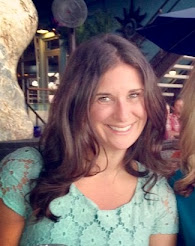Last year, I introduced Restorative Practices to our school and formed a Professional Learning Community of teachers who studied along with me. These teachers used these practices in their own classrooms and the results were incredible.
I really focused in on the Restorative component of community circles. I started using community circles in every guidance lesson. Of course, I enjoyed doing lessons this way, but more importantly, the kids enjoyed it. I asked 5th graders to take an anonymous survey at the end of the year about their experiences with circles and these are just a few of my favorite comments...
"I feel like I can express myself without judgment."
""Everybody gets to talk instead of the teacher calling on the same person over and over."
"They make me feel safe for telling my concerns."
"They are AWESOME! We used to just sit at our desk and Ms. Bulino would read a book to us and we would talk about it but when we do the circle we get to answer questions and express our feelings."
All the feels for that last comment. Engaging, student-centered learning that builds social-emotional wellness...in other words, a counselor's dream.
This year during Professional Development, I presented more information about Classroom Circles and everyone got to participate in a circle. The response was AMAZING! I have never had such an enthusiastic response after presenting at 1:30 on a Friday!
I have seen circles all over the building and heard some amazing conversations. Here are just a few so you can get a sneak peek into our world...
Mrs. Schnitzer's Class
2nd Grade
They were working on their class motto. They brainstormed ideas in small groups, and then came up with a collaborative statement. They will repeat this statement at the beginning of each circle as a reminder to be respectful and kind.

She also had a quote of the week and children connected their world to it. They talked about having a fresh start and new beginnings. It was really very special and sweet.
2nd Grade
They were working on their class motto. They brainstormed ideas in small groups, and then came up with a collaborative statement. They will repeat this statement at the beginning of each circle as a reminder to be respectful and kind.

She also had a quote of the week and children connected their world to it. They talked about having a fresh start and new beginnings. It was really very special and sweet.
Ms. Kirkman's Class
Kindergarten
Ms. Kirkman asked why we need to be unique. One of the students said, "So we can tell who we really are." Ok, that's pretty good coming from a 5-year-old on the fourth day of school. Then she asked, "What if we all looked the same?" and another student answered, "I think we would be really confused and it wouldn't be fun." You could tell they were really thinking and using their imaginations to wonder. It was precious and inspiring all at the same time.
Mrs. O'Kelley's Class
Second Grade
Second Grade
Mrs. O'Kelley had her students connect their curriculum to the circle by using critical thinking skills. All in about 20 minutes she asked the students to compare two stories, make a personal connection, and give advice to the main character to help solve a problem. Text-to-text, text-to-self, text-to-world, like a BOSS! She also made sure they were speaking in complete sentences which builds vocabulary and language skills.
Mr. Porter's Music Class
1st and 3rd Grades
Mr. Porter is even incorporating circles into his music classes and WOW!!!! He began by asking how music made them feel and then asked how they felt when they were about to perform on stage. They said things like,
"I feel embarrassed."
"I feel nervous and happy."
"I'm excited."
"For me, I feel like I'm swept off my feet when I jump off the stage to see my family."
Identifying feelings, sharing them with the group, and being vulnerable during the first week of school is hard, but Mr. Porter made his room a safe place and reminded them that he is here to help and make them love music.
I love that he used an instrument as his talking piece.
I love that he used an instrument as his talking piece.
I can't wait to see more circles next week and to share our amazing progress with you. Have a great Friday!














































